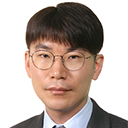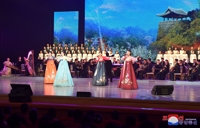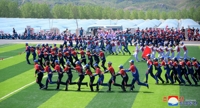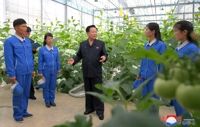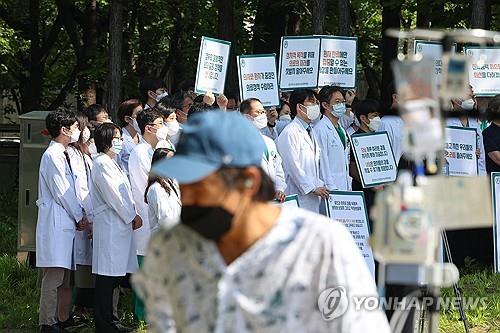(LEAD) S. Korea to create 'strategic command' to lead 'three-axis' system against N.K. threats
(ATTN: UPDATES with more details in paras 12-13)
By Song Sang-ho
SEOUL, July 6 (Yonhap) -- South Korea will push to launch a "strategic command" as an overarching organ to implement its "three-axis" defense system aimed at countering North Korea's evolving nuclear and missile threats, the defense ministry said Wednesday.
President Yoon Suk-yeol and top commanders discussed the issue and other key defense priorities during their meeting at the Gyeryongdae military headquarters, 160 kilometers south of Seoul. He presided over the top brass' session for the first time since assuming office in May.
The push for the envisioned unit comes as the South is striving to sharpen deterrence following a series of North Korea's ballistic missile launches and preparations for what would be its seventh nuclear test.
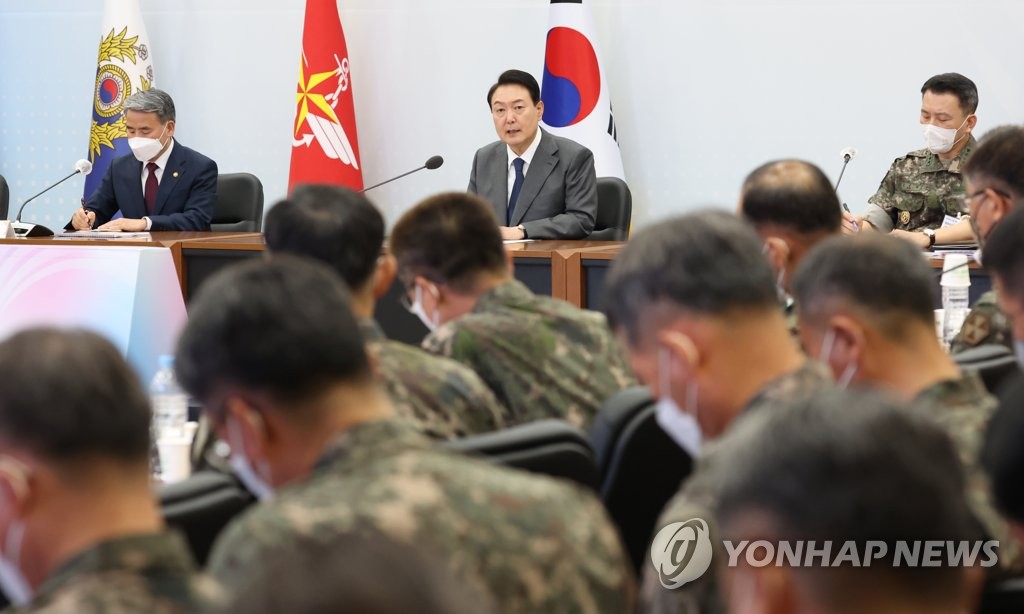
President Yoon Suk-yeol presides over a meeting of top military commanders at the Gyeryongdae military headquarters, 160 kilometers south of Seoul, on July 6, 2022. (Yonhap)
"They discussed the issue of creating the strategic command in phases to ensure it can effectively command and control the three-axis system and lead the efforts for the systematic force development," the ministry said in a press release.
The three-pronged system refers to the Korea Massive Punishment and Retaliation, an operational plan to incapacitate the North Korean leadership in a major conflict; the Kill Chain pre-emptive strike platform; and the Korea Air and Missile Defense system.
The ministry seeks to come up with a specific plan for the creation of the command next year and establish it in 2024, an informed source said, requesting anonymity.
If formed, the command is expected to oversee the operations of the country's current and future core military assets, including F-35A radar-evading fighters, reconnaissance satellites, Patriot Advanced Capability-3 (PAC-3) missile interceptors and Hyunmoo-type ballistic missiles.
It is also likely to command key assets for security operations in cyberspace and outer space, as the military is striving to enhance cross-domain operational capabilities by improving inter-service cooperation, observers said.
At the military gathering, participants agreed to reinforce the South Korean military's intelligence, surveillance and reconnaissance (ISR) capabilities and bolster capabilities that undergird the operation of the three-axis system.
"Through this, they agreed to strengthen our military's independent deterrence and capabilities to respond (to North Korean threats)," the ministry said.
The ministry also outlined its efforts to expeditiously roll out artificial intelligence (AI)-based defense systems incorporating both unmanned and manned military equipment. The efforts included crafting "more rapid, flexible" defense acquisition procedures and nurturing AI specialists.
In line with the modernization efforts, the military plans to conduct the trial operation of units employing cutting-edge technologies and expand such units in phases to all armed services.
The Army has already run the Army TIGER trial unit armed with high-tech equipment at its 25th Division since last month. TIGER is short for the transformative innovation of ground forces enhanced by the fourth industrial revolution technology.
Participants in the meeting included Defense Minister Lee Jong-sup, Joint Chiefs of Staff chief Gen. Kim Seung-kyum, Army Chief of Staff Gen. Park Jeong-hwan, Chief of Naval Operations Adm. Lee Jong-ho, Air Force Chief of Staff Gen. Jung Sang-hwa and Marine Commandant Lt. Gen. Kim Tae-sung.
sshluck@yna.co.kr
(END)
-
 BTS' RM to prerelease a track of 2nd solo album
BTS' RM to prerelease a track of 2nd solo album -
 BTS' Jungkook's 'Seven' chosen as hottest hit outside U.S.
BTS' Jungkook's 'Seven' chosen as hottest hit outside U.S. -
 From pastime to academic discipline: Exhibition spotlights evolution of Korean embroidery
From pastime to academic discipline: Exhibition spotlights evolution of Korean embroidery -
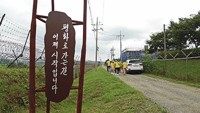 Gov't to open 10 trails near DMZ for visitors next month
Gov't to open 10 trails near DMZ for visitors next month -
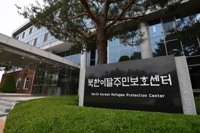 Number of N. Korean defectors entering S. Korea reaches 43 in Q1
Number of N. Korean defectors entering S. Korea reaches 43 in Q1
-
 From pastime to academic discipline: Exhibition spotlights evolution of Korean embroidery
From pastime to academic discipline: Exhibition spotlights evolution of Korean embroidery -
 BTS' RM to prerelease a track of 2nd solo album
BTS' RM to prerelease a track of 2nd solo album -
 BTS' Jungkook's 'Seven' chosen as hottest hit outside U.S.
BTS' Jungkook's 'Seven' chosen as hottest hit outside U.S. -
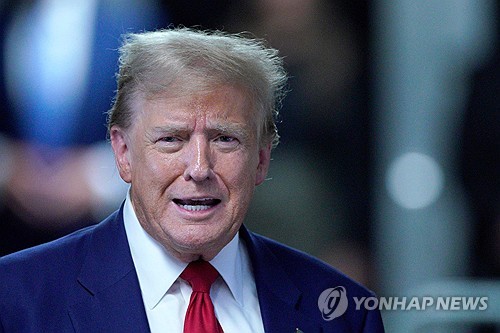 Trump suggests U.S. could withdraw its troops if S. Korea does not contribute more to support USFK: TIME
Trump suggests U.S. could withdraw its troops if S. Korea does not contribute more to support USFK: TIME -
 Number of N. Korean defectors entering S. Korea reaches 43 in Q1
Number of N. Korean defectors entering S. Korea reaches 43 in Q1
-
 Anti-terrorism alert raised for 5 overseas S. Korean diplomatic missions
Anti-terrorism alert raised for 5 overseas S. Korean diplomatic missions -
 Hybe's sublabel head demanded unilateral contract termination authority for NewJeans: sources
Hybe's sublabel head demanded unilateral contract termination authority for NewJeans: sources -
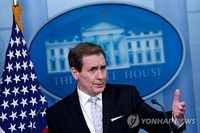 (3rd LD) Russia sent more than 165,000 barrels of refined petroleum to N. Korea in March: White House
(3rd LD) Russia sent more than 165,000 barrels of refined petroleum to N. Korea in March: White House -
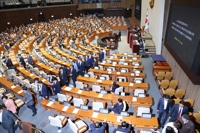 (2nd LD) Opposition-controlled National Assembly passes bill on special counsel probe over Marine's death
(2nd LD) Opposition-controlled National Assembly passes bill on special counsel probe over Marine's death -
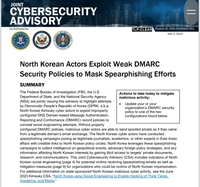 U.S. releases new cybersecurity advisory against N.K.-linked cyber incursion group
U.S. releases new cybersecurity advisory against N.K.-linked cyber incursion group
